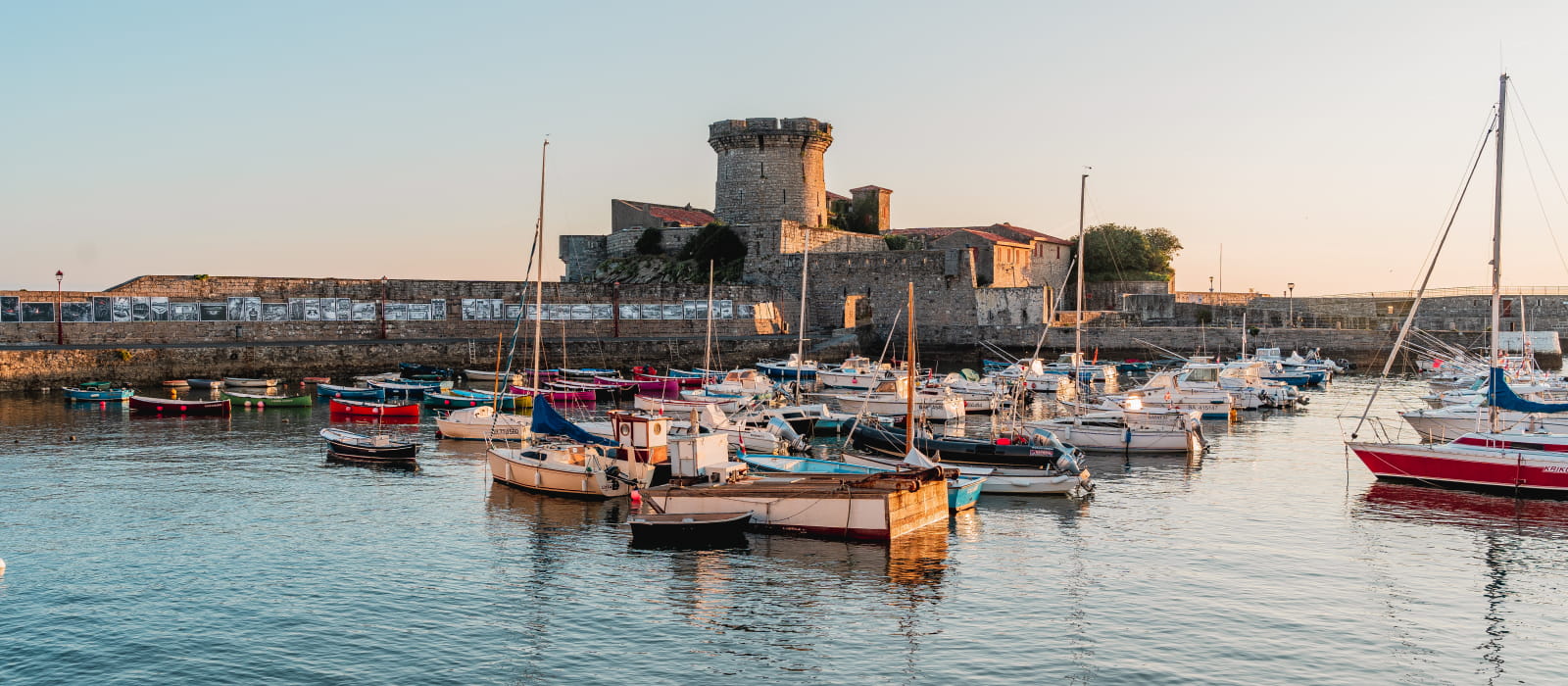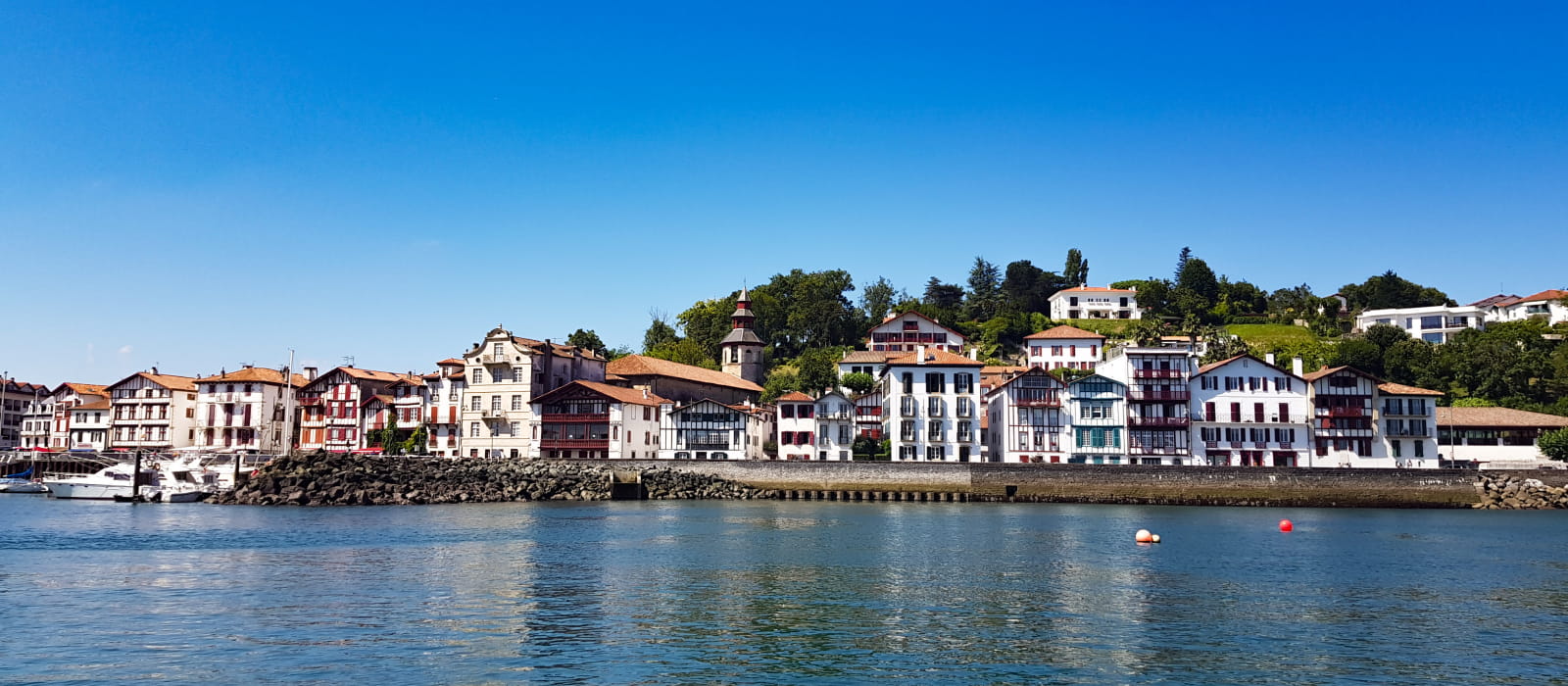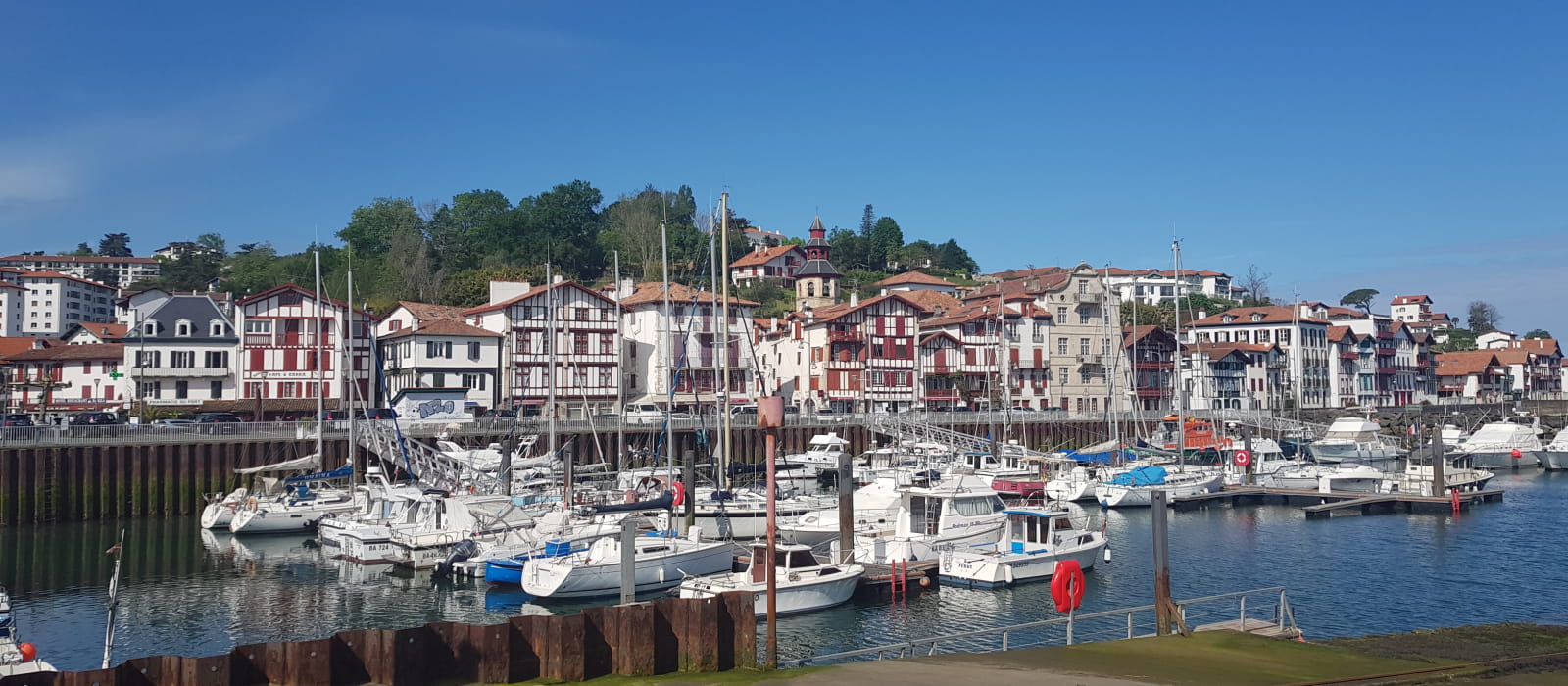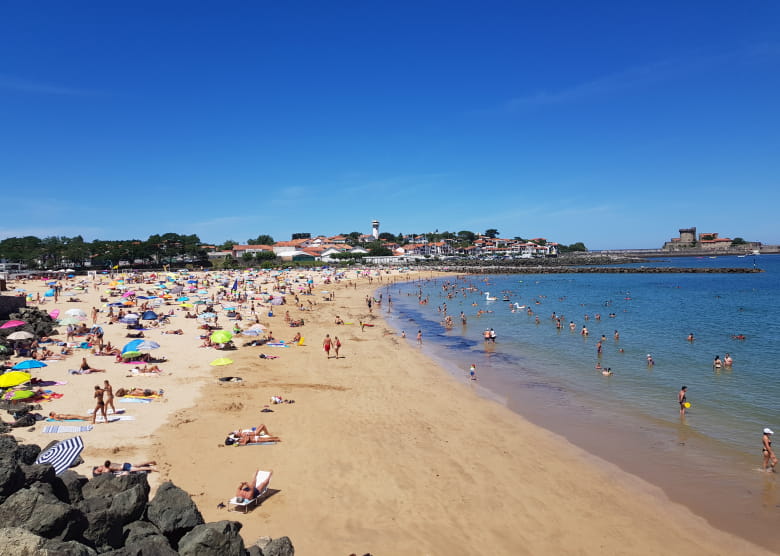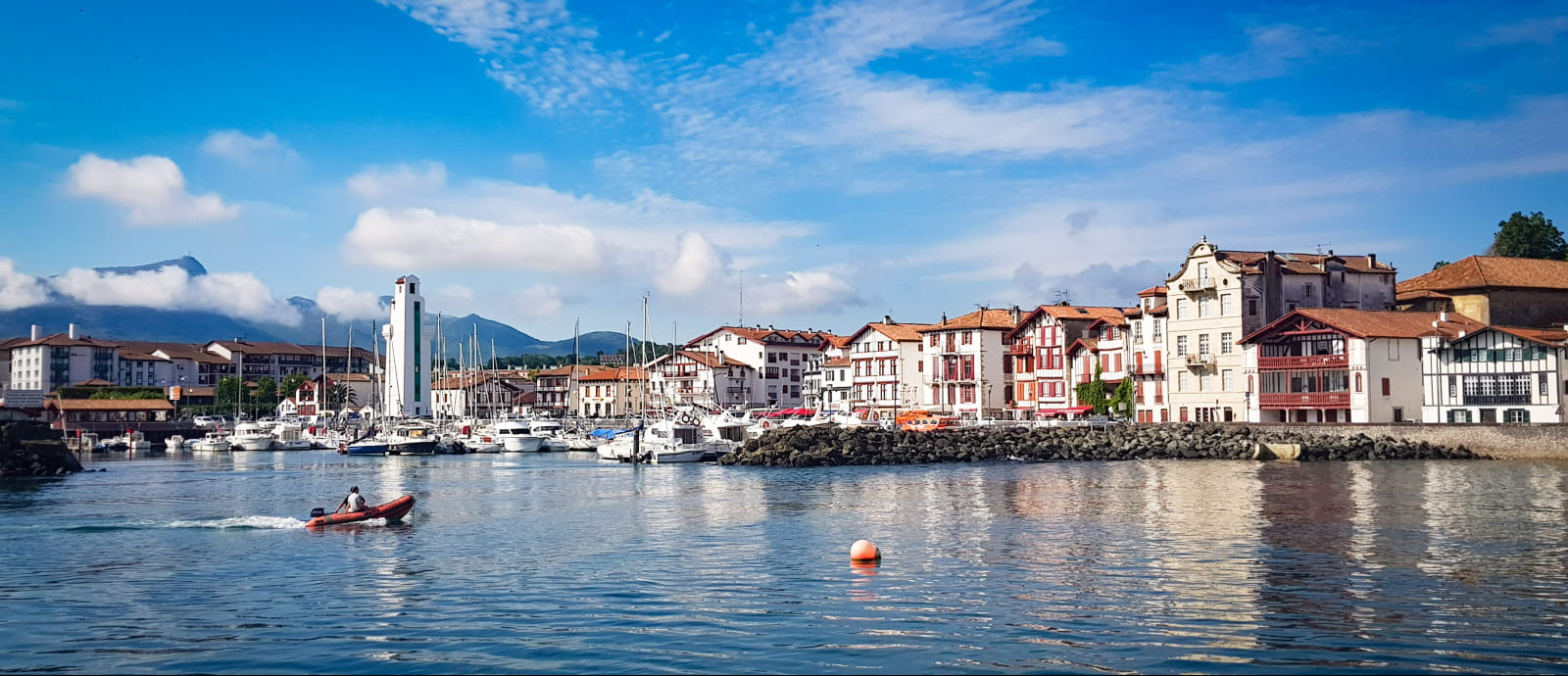
Ciboure: the fishermen's village
Ziburu
From Ciboure to Saint-Jean-de-Luz there is only one bridge. It is from this famous bridge that Ciboure (“ziburu”: the head of the bridge in Basque) takes its name. But nature has nothing to do with borders and it is the bay that unites these two towns, which obtained the "City and Country of Art and History" label in 2016. Ciboure with its 6,250 inhabitants has always looked towards the sea. Until the last century, fishing and fish canning provided a livelihood for the entire population. The sea has influenced the life and history of the village and remains strongly-rooted in the character of its inhabitants, even though the economy is more focused on tourism nowadays.
Town center
The few narrow streets connecting the church to the fronton give Ciboure its character and the short strolls leading you from one to the other are sure to delight.
First of all, there is the Church of Saint-Vincent: built in the 14th century, in a Baroque style, it has all the criteria of Basque churches with its galleries and its boat-shaped ex-voto that fishermen offered to the Virgin for protection during their sea trips.
The Basque population, with their strong faith in a somewhat austere form of Catholicism, also know how to have a good time at the fronton, the place for pelota games and festivities. It is lined with bars and restaurants in the shade of plane trees, where life is particularly good. Between the two you can see a pretty fountain built in 1676. Now listed as a historical monument, it was once the main source of running water in the town centre and no doubt a great place for town gossip.
THE ATMOSPHERE
Inhabitants of Ciboure can be recognised by their very pronounced accent; there is really a community spirit that reigns here. Very strong invisible bonds unite them, undoubtedly due to past generations whose very hard life, dependent on the random results of fishing and weather conditions, resulted in unfailing solidarity (if the weather was bad, they did not go out to sea, therefore they did not get paid : that was the harsh reality).
Conditions are much better today but the spirit of solidarity is still present. Moreover, every Thursday, except in July and August, restaurant owners around the fronton organize a "Pintxo Pote". This is an occasion for all to feast on tapas and have a drink together and share an enjoyable moment.
Socoa
Beaches and water activities
Leaving from the centre of town, one can easily reach the fort of Socoa on foot or by bike; a pleasant trip along the D912 will enable you to discover a superb view of the sparkling sea, the fine sandy beaches and the fort.
Socoa beach is protected by a dike which “breaks” the waves. It is a modestly sized beach, ideal for families with children. If you continue along the quay, in addition to restaurants with price ranges to suit all budgets, (LINK) you will discover, catamarans, dinghies, optimists and other boats in mooring. Socoa is full of nautical activities, several (LINK) sailing and diving schools have set up their premises, built directly on the dike. It is also the ideal place to set out into the bay on a paddle board. All of these people live in perfect harmony in the shelter of the fort.
Both beaches are supervised in summer.
On the way, you will pass by the small port of Socoa and the dinghy beach where catamarans, dinghies, optimists and other boats are moored. Opposite the port, the old warehouses transformed into shops now house restaurants renowned for their fish, with all the price ranges you could wish for, but also providers of nautical activities.
Socoa is full of nautical activities, several sailing and diving schools have set up their premises, dug into the sea wall. It is also the ideal place for a departure in the bay in paddle from the small beach of the dinghies exclusively reserved for the nautical activities. All this little world lives in perfect harmony in the shelter of the fort.
The Fort of Socoa

But of course, the fort’s primary vocation was not tourism. Construction of the fort started in 1627 and it was re-modelled by Vauban to ensure the protection of Socoa harbour and the bay of Saint-Jean-de-Luz - Ciboure. It fulfilled this role until the 19th century when it was occupied by the army and customs services. Then it was privatised and served as headquarters for the Basque Yacht-Club and subsequently as holiday camps for sailing activities.
In 2012, the South Basque Country Urban Community bought it. Today a European university is using it to work on a major project relating to the sea.
EGIATEGIA, wine-making in the sea
In 2008, Emmanuel Poirmeur, oenologist and pioneer in his field, embarked on a very crazy project. Ocean vinification consists of immersing wine vats in the bay of Saint-Jean-de-Luz - Ciboure to ferment the grapes in an entirely natural way. It is a revolutionary process. When he started, many people thought he was eccentric, but against all odds, he has perfected his method and now you can find his wine on the tables of the best restaurants in the region. Cellar tours are organized all year round.
The launching of the protection blocks
Socoa is also the place where the concrete blocks used to protect the dykes in the bay of Saint-Jean-de-Luz - Ciboure are manufactured and stored.
From the end of the 19th century, the dykes had to be protected to prevent them from being washed away by marine erosion. To this end, blocks have been regularly launched: around thirty per year since 1984. Today, more than 20,000 blocks are immersed around the Artha and Socoa dykes.
These are ophite-based concrete blocks weighing 50 tonnes and with a volume of 20 m3.
The launching system has remained the same since the current block pontoon is built according to the same plans as those of the time. A special boat is needed for launching. It is made up of two boats connected by an iron frame to which the block is attached in order to place it behind the dikes.
When you walk along the Socoa dyke, at low tide and in calm seas, you can see some of the blocks covered with white tiles. This is not just for aesthetics, as underneath the tiles are sensors and chips, linked by satellite, to study the movements of these blocks throughout the year.




